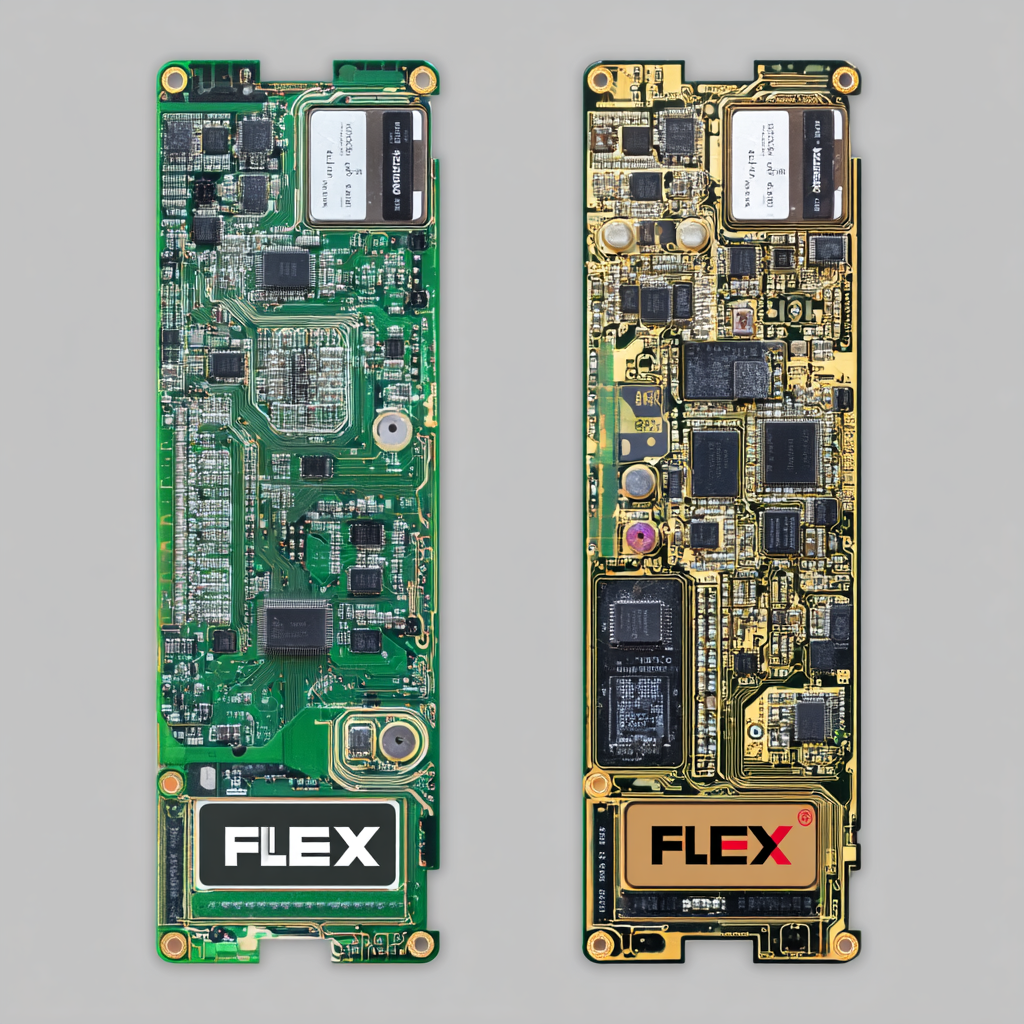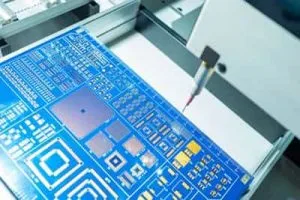JHY PCB Blog Hub
Your Source for Expert PCB Design, Manufacturing, and Assembly Insights – Stay Informed with 2025 Trends!
In-Depth Comparison of the Best Flex Circuit Boards: Performance Metrics and Market Analysis
In the rapidly evolving landscape of electronics, Flex Circuit Boards have emerged as a pivotal technology, facilitating innovative designs and enhancing device performance. These versatile circuits offer unique advantages over traditional rigid boards, including lightweight construction, space-saving flexibility, and impressive adaptability for intricate layouts. However, with the increasing reliance on Flex Circuit Boards in various applications, it becomes crucial to address the challenges associated with their performance and manufacturing processes. This blog aims to provide an in-depth comparison of the best Flex Circuit Boards available in the market, focusing on essential performance metrics that define their effectiveness. By analyzing key issues such as durability, thermal performance, and production costs, we will uncover the strengths and weaknesses of different types of Flex Circuit Boards. Moreover, market analysis will help identify emerging trends and potential solutions for existing problems, ensuring that manufacturers and engineers can make informed decisions in selecting the optimal Flex Circuit Board for their specific needs.

Comparison of Rigid vs. Flexible Circuit Boards: Key Performance Metrics
The demand for advanced electronic solutions has sparked a significant debate between
rigid and flexible circuit boards,
especially considering their respective performance metrics. Rigid printed circuit boards (PCBs) traditionally dominate industries
where durability and high-temperature performance are non-negotiable, with a market share that exceeded
45% in 2022, according to market analysis by IPC. Their robustness is ideal for applications
requiring stable and consistent electrical connections,
often making them a go-to choice in consumer electronics and automotive sectors.

Analysis of Material Types Used in Flex Circuit Boards and Their Impact on Functionality
When examining flex circuit boards, understanding the material types used is crucial to evaluating their overall functionality. Polyimide and polyester are two of the most commonly utilized materials in the production of flex circuits. Polyimide is favored for its high heat resistance and flexibility, making it suitable for a wide range of applications where temperature variations are a concern. On the other hand, polyester offers a more cost-effective solution, though it sacrifices some thermal endurance for affordability. It's essential to consider these trade-offs when selecting the right material for a specific project.
**Tip:** Always assess the environmental conditions that the circuit will face. Choosing the appropriate material not only enhances performance but also ensures longevity and reliability in the intended application.
Furthermore, the choice of conductive materials, such as copper or silver, plays a significant role in the performance metrics of flex circuit boards. Copper is widely utilized due to its excellent conductivity and relatively lower cost. However, silver, although more expensive, provides superior conductivity and is often used in high-performance applications. The selection of conductive material should align with the power requirements and temperature tolerances of the device.
**Tip:** When designing a flex circuit board, prioritize both performance needs and budget constraints to create an optimal balance that suits your project's goals.
Market Trends: Growth Rate of Flex Circuit Boards in Electronics Industry (2023-2030)
The flex circuit board market is experiencing significant growth, driven by the increasing demand for miniaturization and flexible solutions in various electronic applications. According to a report by ResearchAndMarkets, the global flex circuit board market is projected to grow at a compound annual growth rate (CAGR) of approximately 10.1% from 2023 to 2030, reaching an estimated value of $35 billion by the end of the forecast period. This growth reflects the rising adoption of flexible circuits in consumer electronics, automotive, and medical devices, where space-saving and lightweight designs are increasingly critical.
In the electronics industry, the trend towards interconnected devices has further fueled the demand for flex circuit boards. MarketsandMarkets indicates that the automotive sector alone is expected to witness a growth rate of around 12% during the same period, largely due to the integration of advanced technologies like IoT and autonomous driving systems that require more complex and compact circuit designs. As manufacturers continue to innovate and optimize production processes, the flexibility and adaptability of circuit boards will remain a pivotal factor in their widespread adoption across multiple sectors.
In-Depth Comparison of the Best Flex Circuit Boards: Performance Metrics and Market Analysis
| Metric | 2023 Value | 2024 Value | 2025 Value | 2026 Value | 2027 Value | 2028 Value | 2029 Value | 2030 Value |
|---|---|---|---|---|---|---|---|---|
| Market Size (Billion USD) | 5.0 | 5.5 | 6.1 | 6.8 | 7.5 | 8.3 | 9.2 | 10.0 |
| CAGR (%) | - | 10% | 11% | 11% | 10% | 10% | 10% | 10% |
| Adoption Rate (%) | 25% | 27% | 30% | 33% | 35% | 38% | 40% | 43% |
| Key Segment Growth (%) | Automotive: 12% | Consumer Electronics: 10% | Healthcare: 11% | Telecommunications: 9% | Aerospace: 8% | Industrial: 10% | Military: 9% | Consumer Goods: 11% |
Cost-Benefit Analysis of Custom Flex Circuit Boards vs. Standard Options
When considering the manufacturing of flex circuit boards, businesses often face the choice between custom designs and standard options. Custom flex circuits, while initially more costly, offer significant advantages in performance and suitability for unique applications. Tailored designs can enhance device compactness, optimize electrical performance, and streamline assembly processes, making them ideal for specialized industries like medical devices, aerospace, and high-end consumer electronics.
On the other hand, standard flex circuit boards present a more cost-effective solution for projects with less stringent performance requirements. These off-the-shelf options can reduce lead times and save on initial investment, which is particularly appealing for prototypes or smaller-scale productions. However, the trade-off often lies in reduced flexibility regarding size, shape, and functionality. By conducting a thorough cost-benefit analysis, companies can better assess whether to invest in custom solutions or rely on standard flex circuits, ultimately making a decision that aligns with their project goals and budget constraints.
Cost-Benefit Analysis of Custom Flex Circuit Boards vs. Standard Options
Environmental Impact and Sustainability Considerations in Flex Circuit Board Production
The production of flexible circuit boards is increasingly under scrutiny due to its environmental impact and the push for sustainability within the electronics industry. According to a recent report by the International Electronics Manufacturing Initiative (iNEMI), the manufacturing process for traditional flex circuits generates approximately 20% more waste compared to rigid boards, primarily due to excess material and chemical usage. This waste not only poses disposal challenges but also contributes to the overall carbon footprint of electronic devices.

To address these environmental concerns, many manufacturers are adopting greener production techniques. For example, the use of bio-based materials and eco-friendly inks has been rising. A study by IPC International suggests that companies utilizing sustainable materials can reduce their greenhouse gas emissions by up to 30%. Additionally, advancements in recycling methods for flex circuits are crucial; it is estimated that recycling could recover about 95% of materials used, significantly mitigating environmental impacts. As demand for environmentally conscious products grows, integrating sustainability into flex circuit board production will be essential for manufacturers aiming to stay competitive in this evolving market.










